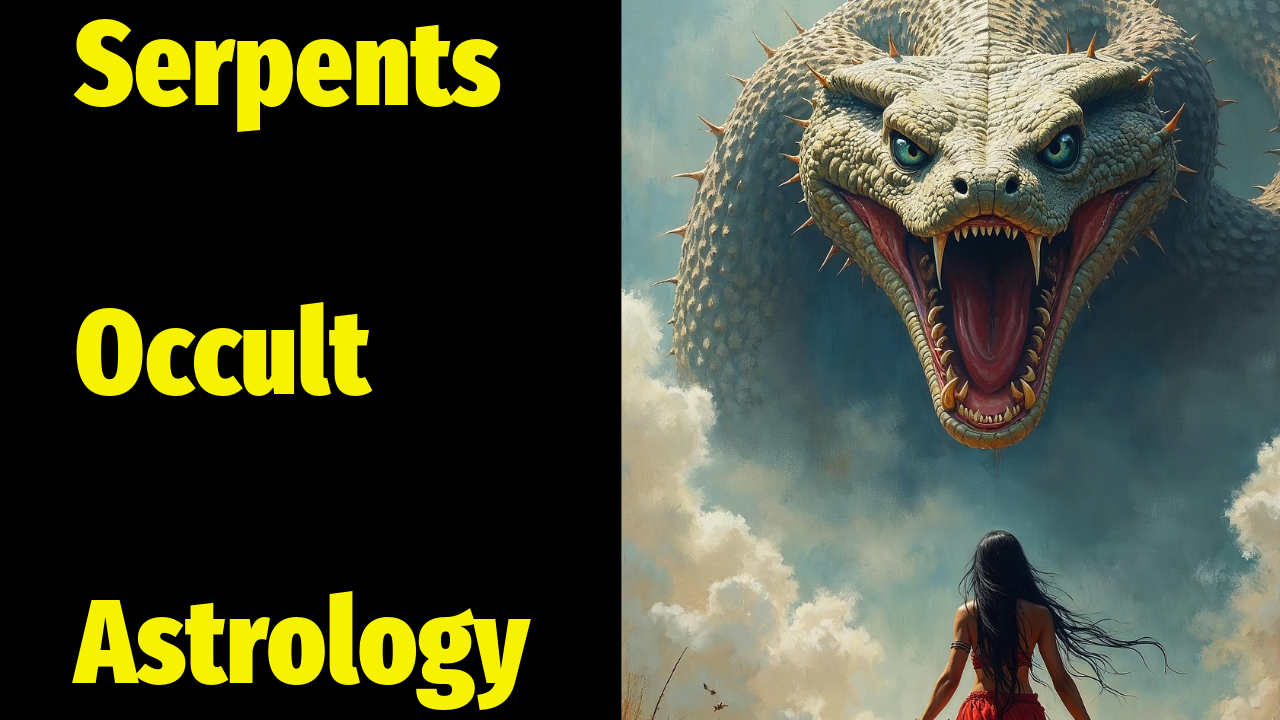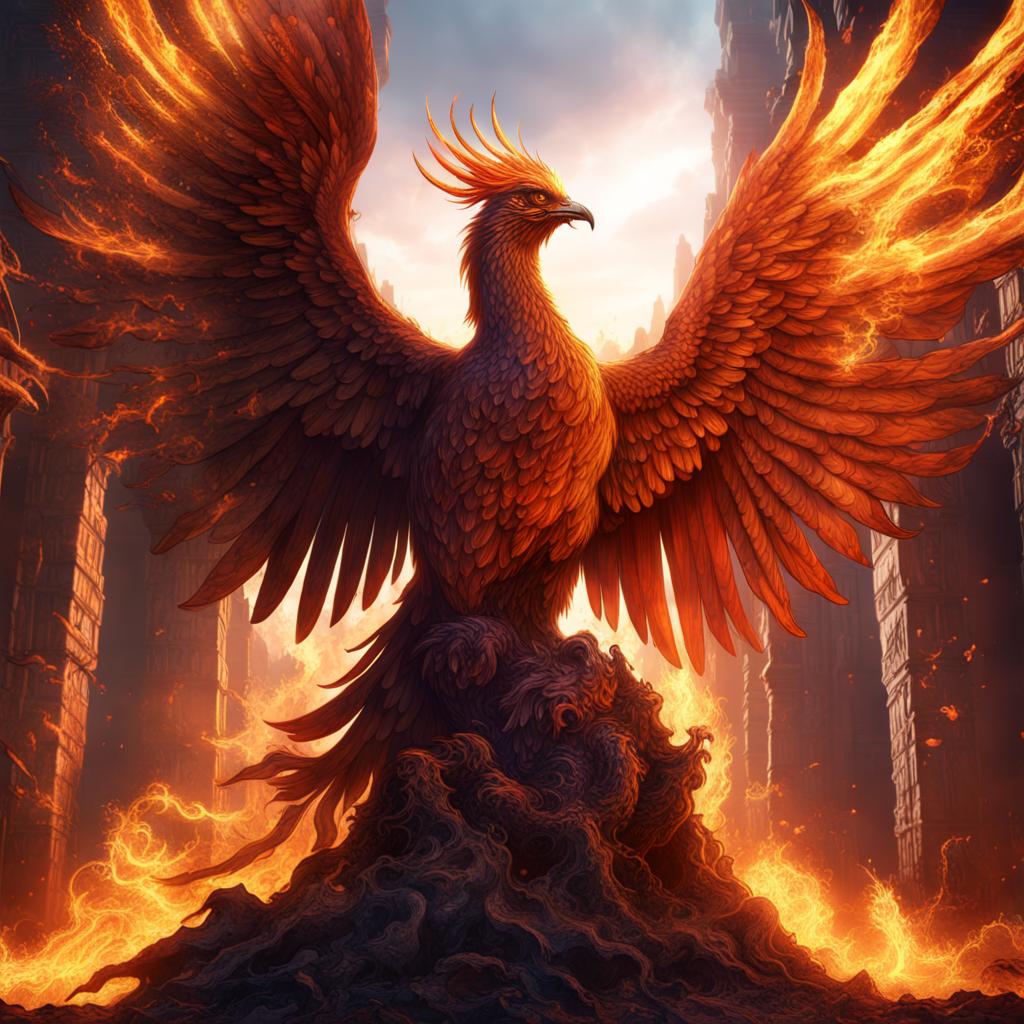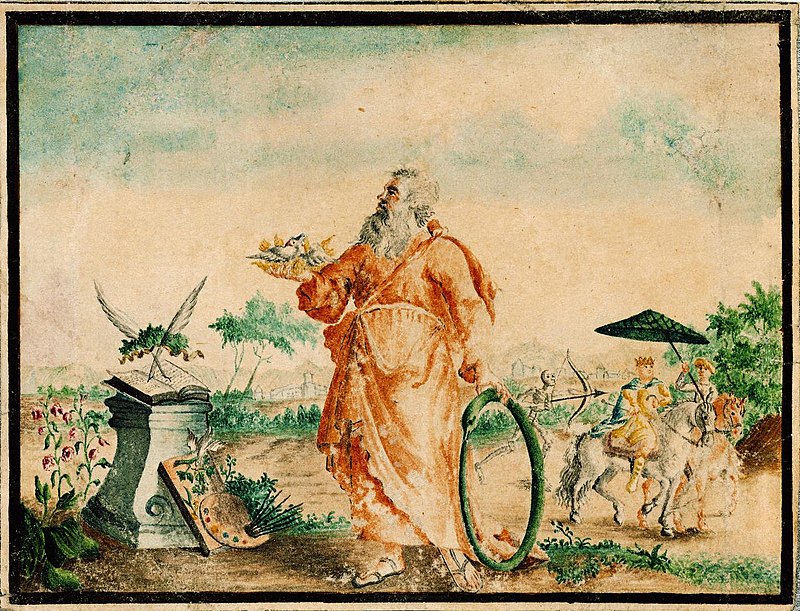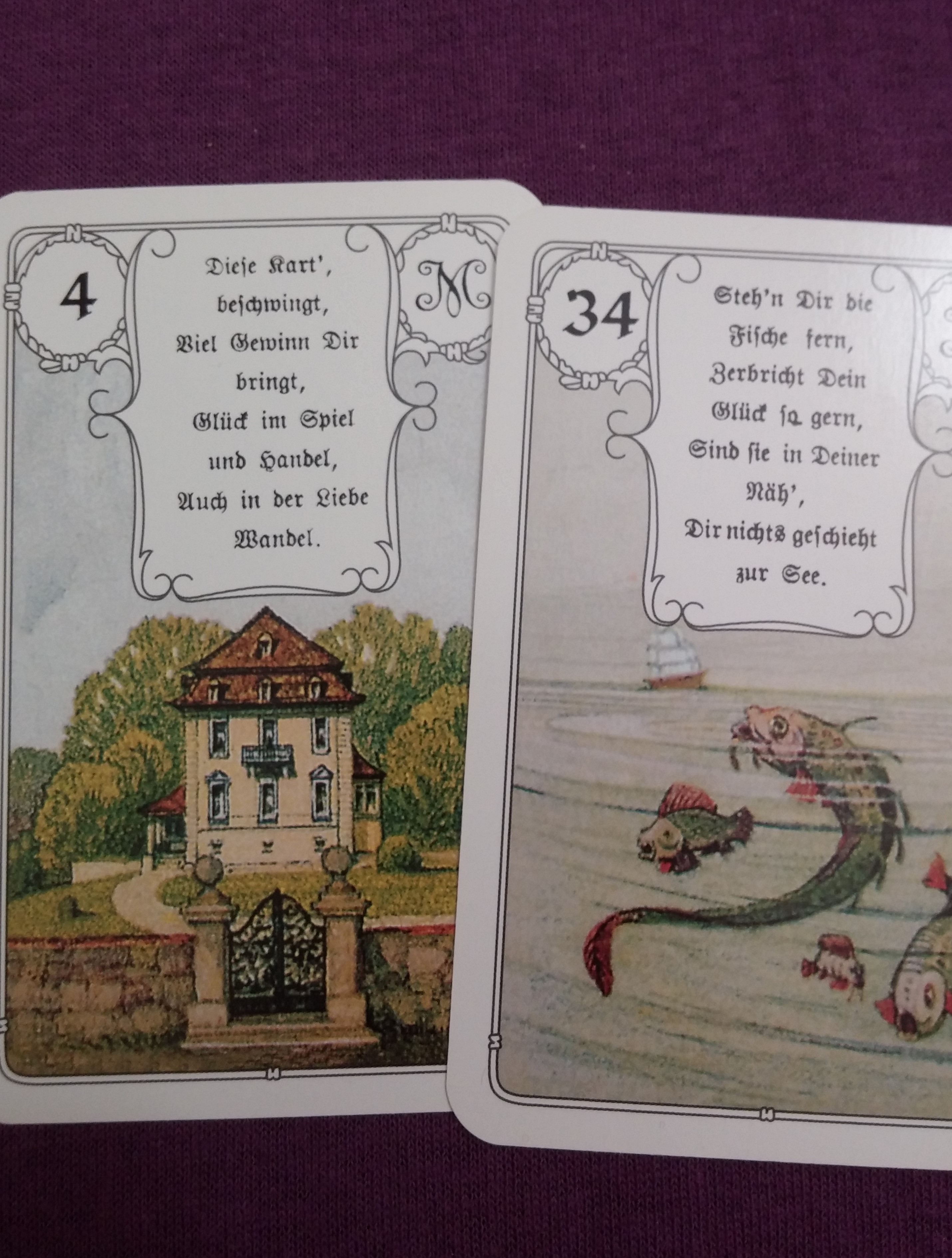
Throughout human history, serpents have been revered as symbols of secrecy, wisdom, and cosmic power.
The serpent has appeared in countless mythologies, often as a guardian of sacred knowledge or a bridge between realms, connecting the material and metaphysical worlds. Its ability to shed its skin represents renewal, transformation and the cycle of life and death.
The 12 Mystical Serpents offer profound insights into the forces shaping our lives and the universe. By understanding their connection to symbolism, we can unlock deeper layers of self-awareness and cosmic connection.
In astrology and The Occult, serpents often embody energies associated with the zodiac signs, planetary influences and mystical awakenings. They reflect hidden wisdom and knowledge, cyclical growth, karmic forces and the dynamic interplay between the conscious and subconscious realms.
Found mainly in Hinduism, Buddhism, and Jainism, The 12 Mystical Nagas represent cosmic balance, transformation, and the interplay between the earthly and the divine.
They are often depicted as half-human, half-serpent beings, known for their wisdom, supernatural abilities, and control over water and fertility. The Nagas play vital roles in mythology and are known as protectors of treasures, both material and metaphysical.
They are revered as guardians of hidden wisdom, protectors of the natural world and custodians of mysteries. They are also associated with the calendar and the stars, representing the duality of creation and destruction, and the interconnectedness of life.
Serpens, Ancient Greek Óphis, ‘the Serpent’, is one of the 48 constellations listed by the 2nd-century astronomer Ptolemy, and it is included as one of the 88 modern constellations. An old alternative name for the constellation was Serpentarius.
It is unique among the modern constellations in being split into two non-contiguous parts, Serpens Caput (Serpent Head) to the west and Serpens Cauda (Serpent Tail) to the east. Between these two halves lies the constellation of Ophiuchus, the “Serpent-Bearer”.
The brightest star in the constellation of Serpens, in Serpens Caput, is Alpha Serpentis or Unukalhai, from the Arabic ʽUnuq al-Hayyah, “The serpent’s Neck”, and Cor Serpentis from the Latin “the Heart of the Serpent”.
Ophiuchus, opposite of Orion, is a large constellation straddling the celestial equator. Its name comes from the Ancient Greek ophioûkhos, meaning “serpent-bearer”, and it’s commonly represented as a man grasping a snake, like Asclepius, the God of Healing.
Ras-al-hague is its brightest star. The name comes from the Arabic phrase “raʾs al-ḥawwāʾ”, meaning “Head of the Serpent Collector” or “Head of the Snake Charmer”.
This symbolism is also found in Alchemy with the Ouroboros, the serpent eating its tail, representing eternity and cyclical time, akin to the progression through astrological houses.
Each of the 12 Nagas represents an aspect of universal energy and a mystical, inner lesson.
1. Ananta (Infinity)
Ananta, Sanskrit for ‘Without end’, also a name of Shesha, the celestial snake. This multi-headed serpent is the King of the Nagas. He is the divine couch of Lord Vishnu and symbolizes balance, stability, and cosmic infinity.
Role: Cosmic serpent of eternity.
Symbolism: Represents the infinite nature of existence and the cosmic cycle of creation and dissolution.
Connection: Associated with Lord Vishnu, who rests on Ananta in an ocean of milk.
2. Vasuki (King of Serpents)
Vasuki is the king of the Nagas in Hinduism. He is generally depicted coiling around the neck of Shiva, who is believed to have blessed and worn him as an ornament. He offered to pull Mount Mandara out of the ocean of milk to release the nectar of immortality.
He is known in Chinese and Japanese mythology as being one of the “8 Great Dragon Kings”. They are the only snakes which can fly and also mentioned as the most venomous snakes.
Role: Naga King known for his strength and loyalty.
Symbolism: Represents devotion, power, and the ability to endure challenges.
Connection: Central to the “churning of the ocean” myth, symbolizing balance between forces.
3. Takshaka (The Architect)
Takshaka is a Nagaraja in Hinduism and Buddhism. He is mentioned in the Hindu epic Mahabharata as well as in the Bhagavata Purana. He is described to be a king of the Nagas and one of the sons of Kadru.
He is also known in Chinese and Japanese mythology as being one of the “8 Great Dragon Kings”.
Takshaka is mentioned as the friend of Indra, the King of the Gods. He formerly dwelt in Kurukshetra and the forest of Khandava (modern-day Delhi).
Role: A Naga known for creating illusions and constructing realms.
Symbolism: Transformation and hidden creativity.
Connection: A figure of both fear and reverence, symbolizing the balance of destruction and renewal.
4. Karkotaka (The Venomous One)
Karkotaka once deceived Narada, the divine sage, in a game of chance.
It is believed that dwelling on Karkotaka allows one to be safeguarded against the asura Kali. A vengeful Naga.
Role: A serpent of powerful poison and protection.
Symbolism: Represents the destructive power of transformation.
Connection: Often invoked as a protector against enemies and negative forces.
5. Padma (The Lotus Bearer)
In the Vishnu Purana, Padma is described as one of the prominent Naga Kings residing in Patala (the subterranean realms).
Padma is associated with immense wisdom, mystical powers, and the protection of sacred treasures.
The Bhagavata Purana mentions the role of Nagas in maintaining cosmic balance. Padma Naga, as a symbolic figure, represents harmony and the subtle energies within the cosmos.
Role: Associated with purity and mystical awakening.
Symbolism: The blossoming of consciousness and divine beauty.
Connection: Closely tied to water and wisdom.
6. Shesha (The Remainder)
Also known as Adishesha, the first Naga.
Role: The eternal serpent holding the universe.
Symbolism: Stability, grounding, and cosmic order.
Connection: Depicted as bearing the Earth on its hoods, ensuring balance.
7. Kulika (The Churning Serpent)
Another form of Vasuki.
Role: Aiding in the churning of the cosmic ocean.
Symbolism: Cooperation and persistence.
Connection: Highlights the importance of effort in achieving enlightenment.
8. Mahapadma (The Great Lotus)
Role: Protector of treasures and divine knowledge.
Symbolism: Guardianship of wisdom and cosmic wealth.
Connection: Keeper of hidden realms and esoteric secrets.
9. Sankhapala (The Conch Protector)
One of the 12 dimensions of the Nagas.
Role: A Naga guarding the conch of divine sound.
Symbolism: Communication, sacred sound, and divine knowledge.
Connection: Signifies the eternal vibration of creation.
10. Dhritarashtra (The World Bearer)
One of the 12 dimensions of the Nagas.
Role: Supports the physical world and its balance.
Symbolism: Responsibility and strength.
Connection: Represents the burden and blessing of maintaining cosmic harmony.
11. Pandara (The Bright One)
Role: Naga associated with illumination and enlightenment.
Symbolism: The light of knowledge dispelling ignorance.
Connection: Inspires clarity and higher understanding.
12. Kaliya (The Serpent Subdued)
The serpent that lived in the Yamuna river.
Role: A serpent subdued by Krishna in Hindu mythology.
Symbolism: Overcoming darkness, ego, and ignorance.
Connection: Represents the triumph of divinity over chaos.
Nagas as Guardians of the Zodiac Gates
The Nagas’ connection to astrology goes far beyond mythological references, embodying profound occult truths about transformation, karma, and cosmic cycles. They remind us that just as the serpent sheds its skin, we too can evolve through the trials and gifts revealed by the stars.
Occult traditions often describe the zodiac as a symbolic journey of the soul, and The Nagas, as protectors of treasures, are seen as guardians of cosmic gateways.
They represent the trials and transformations required to ascend to higher states of consciousness, symbolized by the journey through the zodiac and astrological houses.
The 12 Mystical Serpents align with the 12 zodiac signs, each embodying unique energies and lessons, offering insights into the cosmic forces at play in our lives.
The 12 signs of the Zodiac are further seen as paths of personal awakening, with the Nagas symbolizing the knowledge to navigate these paths.
Different schools of Astrology may associate a zodiac sign with one or more planets, so, whether you use Tropical, Sidereal or other systems, many layers of energies need to be considered.
1. Aries – The Flaming Serpent
Element: Fire
Traits: Bold, energetic, and pioneering.
Symbolism: This serpent represents the spark of creation and the raw energy of new beginnings. It challenges us to take initiative and embrace courage in the face of the unknown.
Planetary Influence: Mars governs this serpent, adding intensity and drive.
2. Taurus – The Earthbound Serpent
Element: Earth
Traits: Grounded, sensual, and steadfast.
Symbolism: The Earthbound Serpent embodies stability and the beauty of material existence. It teaches the value of patience and the importance of nurturing one’s surroundings.
Planetary Influence: Venus imbues this serpent with harmony and abundance.
3. Gemini – The Twin Serpents
Element: Air
Traits: Dualistic, curious, and communicative.
Symbolism: Representing duality, this serpent governs intellect and adaptability. It emphasizes the interplay of opposites, such as light and dark, or thought and emotion.
Planetary Influence: Mercury enhances quick thinking and versatility.
4. Cancer – The Lunar Serpent
Element: Water
Traits: Nurturing, intuitive, and protective.
Symbolism: This serpent represents deep emotional waters and psychic intuition. It guides individuals to seek emotional security and protect their inner world.
Planetary Influence: The Moon governs this serpent’s tides.
5. Leo – The Solar Serpent
Element: Fire
Traits: Radiant, confident, and creative.
Symbolism: This serpent shines with divine light, symbolizing personal power and self-expression. It urges us to embrace our inner greatness and share it with the world.
Planetary Influence: The Sun rules this serpent, emphasizing vitality and leadership.
6. Virgo – The Healing Serpent
Element: Earth
Traits: Analytical, meticulous, and service-oriented.
Symbolism: This serpent embodies the wisdom of healing and the power of precision. It inspires us to align with our purpose through discipline and service to others.
Planetary Influence: Mercury provides intellect and practicality.
7. Libra – The Balancing Serpent
Element: Air
Traits: Harmonious, diplomatic, and aesthetic.
Symbolism: This serpent represents balance and fairness. It seeks to harmonize relationships and bring beauty to life.
Planetary Influence: Venus adds charm and a love of equilibrium.
8. Scorpio – The Transformational Serpent
Element: Water
Traits: Intense, mysterious, and transformative.
Symbolism: Representing rebirth and the depths of the subconscious, this serpent guides through cycles of death and renewal.
Planetary Influence: Pluto and Mars amplify its transformative power.
9. Sagittarius – The Archer Serpent
Element: Fire
Traits: Optimistic, adventurous, and philosophical.
Symbolism: This serpent embodies the quest for higher knowledge and truth. It encourages expansive thinking and mystical exploration.
Planetary Influence: Jupiter enhances wisdom and growth.
10. Capricorn – The Mountain Serpent
Element: Earth
Traits: Ambitious, disciplined, and enduring.
Symbolism: It represents resilience and the steady climb to success. It teaches perseverance and mastery over challenges.
Planetary Influence: Saturn brings structure and responsibility.
11. Aquarius – The Visionary Serpent
Element: Air
Traits: Innovative, independent, and humanitarian.
Symbolism: This serpent represents revolutionary ideas and progress. It inspires forward-thinking and collective growth.
Planetary Influence: Uranus fosters innovation and individuality.
12. Pisces – The Cosmic Serpent
Element: Water
Traits: Dreamy, empathetic, and mystical.
Symbolism: Representing the infinite connection to the divine, this serpent dissolves boundaries and fosters enlightenment.
Planetary Influence: Neptune enhances intuition and mystical awareness.
Rahu (the serpent’s head) and Ketu (the serpent’s tail) are the lunar nodes in Vedic astrology and are connected to the Moon. The association of Rahu with ‘sarpas’ (serpents) and Ketu with ‘nagas’ (serpent deities) highlights their deep connection to serpent symbolism.
Rahu symbolizes the desire for material growth and worldly experiences, representing illusion (Maya). It is the “head” that devours but never feels satisfied. It also represents obsession and karmic desires.
Ketu symbolizes liberation. As the “tail,” it releases what Rahu binds, guiding one toward enlightenment. Symbolizes detachment and karmic release.
They are The Serpent Shadows and the most prominent Astrological Connection of the Nagas.
The Rahu-Ketu axis in the natal chart can create the Naga Dosha (serpent affliction or serpent’s curse).
It refers to afflictions in a natal chart caused by past-life transgressions against serpents or serpent deities.
They indicate where karmic debts need resolution and delve into the lessons of past lives and personal evolution.
Such doshas are believed to manifest as obstacles in one’s life, including delays in marriage or childbearing. Remedies often involve rituals and prayers to appease the Nagas.
These “Nagas-Lunar Nodes” represent in fact karmic binders and liberators respectively , their coiled nature symbolizing the cycles of karma and reincarnation, much like the planetary orbits and their effects on human lives.
They are also linked to the serpent in the Garden of Eden, representing the dual forces of temptation (Rahu) and redemption (Ketu).
Mystical Naga Energies in Nakshatras
Certain lunar mansions (Nakshatras, in Vedic Astrology) are governed by serpentine forces.
Vrishchika and Jyeshta (Scorpio): Ruled by Mars and connected to transformation, secrecy and the Occult.
Ashlesha (Cancer): Ruled by the Nagas, it represents occult wisdom, intuitive power, and alchemy. Symbolized by the coiled serpent, emphasizing intuition, secrecy, and emotional depths.
Moola (Sagittarius): Associated with uprooting past karmas and delving into deep transformative processes.
Revati (Pisces): Often linked to cosmic waters, where Nagas dwell, representing transcendence.
Contemplating the 12 Mystical Serpents – Representations, Rituals and Practices in The Occult
Guardians of Sacred Spaces: Nagas are often depicted as protectors of temples, treasures, and sacred knowledge.
Water Deities: Nagas are believed to govern rivers, lakes, and rainfall, symbolizing life and renewal.
Naga Worship: In esoteric traditions, rituals to honor Nagas (especially during Naga Panchami) are believed to enhance intuitive power and resolve karmic afflictions.
Meditative Practices: Practicing meditation during eclipses, focusing on Rahu and Ketu, allows for deep karmic insights and the uncoiling of personal energy. Visualize serpents as guides to unlock hidden wisdom and overcome challenges.
Kundalini Activation: In yogic traditions, the coiled serpent at the base of the spine represents Kundalini, latent inner energy, which, when awakened, connects the individual to cosmic consciousness.
Astrological Insight: Explore your birth chart to identify serpent symbolism tied to your Nakshatras, Sun, Moon, and rising signs.
Ritual Work: Use symbolic elements, such as snake imagery, crystals, or planetary symbols, to align with their energies.
Transformation: Like a serpent shedding its skin, we must embrace change and personal growth.
Balance: Nagas teach the harmony between creation and destruction, wisdom and emotion, the earthly and the divine.
Guardianship: They remind us to protect the treasures of nature, wisdom, and secrecy.
These connections illustrate the profound influence of Nagas within Astrology and the Occult, emphasizing themes of transformation, hidden knowledge, and the intricate interplay of karmic forces.
What do you think about The Nagas and Serpent symbolism? Let us know in the comment section below and share the post!!!
Video version here:
Interesting sources, additional info, courses, images, credits, attributions and other points of views here:
Balancing and Healing the Chakras through Yoga https://www.udemy.com/course/balancing-and-healing-the-chakras-through-yoga/?referralCode=12C81A148616B419AA06
Mudras to Balance and Harmonize your Chakras and Energy Body https://www.udemy.com/course/mudras-to-balance-and-harmonize-your-energy-body/?referralCode=1A275C6E67E05E8C8130
Elemental Energy for Success and Well Being https://www.udemy.com/course/elemental-energy-for-success-and-well-being/?referralCode=A680413E03BEAD96E744
Book a Tarot reading here: https://www.suryaholistictarot.com/book-a-reading/
Check our soundtrack here:
https://lennyblandino.bandcamp.com/track/nivuru-synthetic-waves
Websites:
https://www.staciebronson.com/
Links and References:
https://en.wikipedia.org/wiki/N%C4%81ga
https://en.wikipedia.org/wiki/Ophiuchus
https://en.wikipedia.org/wiki/Serpent_symbolism
https://en.wikipedia.org/wiki/Ananta_(infinite)
https://en.wikipedia.org/wiki/Vasuki
https://en.wikipedia.org/wiki/Takshaka
https://en.wikipedia.org/wiki/Karkotaka
https://www.wisdomlib.org/definition/ananta
https://www.wisdomlib.org/definition/vasuki
https://www.wisdomlib.org/definition/takshaka
https://www.wisdomlib.org/definition/karkotaka
https://www.wisdomlib.org/definition/padmanaga
PICS:
https://en.wikipedia.org/wiki/Ophiuchus#/media/File:Ophiuchus_IAU.svg
https://en.wikipedia.org/wiki/Serpens#/media/File:Serpens_Caput_IAU.svg
https://en.wikipedia.org/wiki/Serpens#/media/File:Serpens_Cauda_IAU.svg
https://en.wikipedia.org/wiki/Ophiuchus#/media/File:Guisard_-_Milky_Way.jpg
https://en.wikipedia.org/wiki/Ophiuchus#/media/File:OphiuchusCC.jpg
https://en.wikipedia.org/wiki/Ophiuchus#/media/File:Azophi_Ophiuchus.jpg
https://en.wikipedia.org/wiki/Vasuki#/media/File:Shiva_01.JPG
https://en.wikipedia.org/wiki/Vasuki#/media/File:Kurma,_the_tortoise_incarnation_of_Vishnu.jpg
https://en.wikipedia.org/wiki/Takshaka#/media/File:Taxaka_Statue.jpg
https://en.wikipedia.org/wiki/Takshaka#/media/File:Snakesacrifice.jpg
https://en.wikipedia.org/wiki/File:Karkotaka_-_Divya_Chitram_Series.jpg
https://pixabay.com/photos/buddha-meditate-naga-statue-1284619
https://en.wikipedia.org/wiki/Shesha#/media/File:Sheshashayi_-_Laxminarayan_by_DHURANDHAR_MV.jpg
https://pixabay.com/photos/pond-naga-cobra-sculpture-6734839
https://pixabay.com/illustrations/ai-generated-serpent-creature-naga-9103383
https://en.wikipedia.org/wiki/Naga_Panchami#/media/File:Naag_or_serpent.jpg
https://commons.wikimedia.org/wiki/Category%3AN%C4%81ga#/media/File:Naga_(349558698).jpg
https://en.wikipedia.org/wiki/Kaliya#/media/File:Indischer_Maler_um_1640_001.jpg
https://en.wikipedia.org/wiki/Kaliya#/media/File:Kaliya_Daman.png
https://en.wikipedia.org/wiki/Moon#/media/File:Lunar_libration_with_phase_Oct_2007_HD.gif
https://en.wikipedia.org/wiki/Sun#/media/File:2017_Total_Solar_Eclipse_(35909952653).jpg
https://commons.wikimedia.org/wiki/Sun#/media/File:The_Sun_taking_Z’s.JPG
https://commons.wikimedia.org/wiki/File:Nh-pluto-charon-v2-10-1-15_1600.jpg
https://commons.wikimedia.org/wiki/File:Mercury_transit_2.jpg
https://commons.wikimedia.org/wiki/File:OSIRIS_Mars_true_color.jpg
https://commons.wikimedia.org/wiki/File:Venus_globe.jpg
https://commons.wikimedia.org/wiki/File:PIA22946-Jupiter-RedSpot-JunoSpacecraft-20190212.jpg
https://commons.wikimedia.org/wiki/File:Saturn_during_Equinox.jpg
https://commons.wikimedia.org/wiki/File:Uranus2.jpg
https://commons.wikimedia.org/wiki/File:Neptune_Full.jpg
https://commons.wikimedia.org/wiki/File:Rahu_graha.JPG
https://commons.wikimedia.org/wiki/File:Ketu_graha.JPG
https://en.wikipedia.org/wiki/Naga_Panchami#/media/File:Snake_poster_Naga_Panchami_(cropped).jpg
https://science.nasa.gov/resource/mars-and-pluto-compared/
https://it.wikipedia.org/wiki/Kundalini#/media/File:Diagramma-chakra-kundalini.gif
https://en.wikipedia.org/wiki/Horoscope#/media/File:Astro_signs.svg
https://commons.wikimedia.org/wiki/File:Olbrich_Botanical_Garden_Naga_Dragon_Statue.jpg
https://commons.wikimedia.org/wiki/File:Coiled_serpent_(met).jpg
https://earthsky.org/constellations/serpens-the-snake-2-pieces-serpens-cauda-serpens-caput/
https://pixabay.com/illustrations/fantasy-dungeon-serpent-dragon-7247949
https://pixabay.com/illustrations/ai-generated-serpent-warrior-woman-9101978
https://pixabay.com/photos/astronomical-clock-clock-time-date-5706
https://pixabay.com/illustrations/constellation-star-sign-heaven-3594963
Below are some specific references and resources related to the 12 Mystical Serpents and the Nagas. These are primarily foundational sources and cultural traditions. Plus, key connections between Nagas
and Astrology as found in the Vedas, Puranas and other traditional Hindu and Sanskrit texts.
VEDAS
Rigveda:
The Nagas are not explicitly mentioned in the Rigveda, but serpentine symbolism is evident in the hymns. The deity Vrtra, often described as a serpent or dragon, is a key figure vanquished by Indra. This battle reflects cosmic order overcoming chaos, a foundational astrological metaphor.
Source: Rigveda, Mandala 1, Hymn 32.
Atharvaveda:
The Atharvaveda includes references to snakes in the context of magical rites and prayers for protection from snakebites, hinting at the acknowledgment of serpentine forces as both protective and destructive.
Source: Atharvaveda, Book 5, Hymn 13.
PURANAS
The Puranas give more detailed mythological accounts of Nagas and their cosmic significance:
Vishnu Purana:
The cosmic serpent Ananta or Shesha, is described as the bed of Lord Vishnu. Ananta is eternal and symbolizes the unending nature of time (Kala). This ties to astrological cycles and cosmic order.
Source: Vishnu Purana, Book 1, Chapter 5.
Garuda Purana:
It discusses Nagas in the context of Naga Dosha (there might be afflictions when all the planets in the kundali are placed between Rahu and Ketu).
Astrological remedies involve worshipping the Nagas.
Source: Garuda Purana, Chapter 99.
Bhagavata Purana (Srimad Bhagavatam):
The churning of the ocean (Samudra Manthan) involves Vasuki, the serpent king, as the rope. This myth is tied to astrological allegories of balance and duality.
Source: Bhagavata Purana, Skanda 8, Chapter 7.
Astrological Texts
In Jyotish (Vedic Astrology), Nagas have a direct connection to celestial and karmic forces:
Brihat Parashara Hora Shastra:
Rahu and Ketu are referred to as shadow planets with serpentine symbolism, representing karmic nodes. These are tied to past-life karmas, reflecting Naga energy as transformative and mysterious.
Source: Brihat Parashara Hora Shastra, Chapter 56 (on Rahu and Ketu).
Saravali:
Discusses the influence of Rahu and Ketu, attributing serpentine qualities like secrecy, unpredictability, and transformational energy to these grahas (planets).
Source: Saravali, Chapter 45.
Mythological Context in Hindu Texts
Mahabharata:
The story of the serpent king Takshaka and his conflict with the Kuru dynasty exemplifies the Nagas’ power and their karmic impact on human lives.
Source: Mahabharata, Adi Parva (Book 1).
Ramayana:
The battle between Lord Rama and the serpent demon Kumbhakarna echoes serpentine energies being subdued by divine order.
Source: Ramayana, Yuddha Kanda (Book 6).
Connection to Nakshatras
The connection between Nagas and specific Nakshatras (lunar mansions):
Ashlesha Nakshatra:
Symbolized by a coiled serpent, this Nakshatra is presided over by the Nagas. It is associated with intuition, secrecy, and transformation.
Source: Taittiriya Brahmana (a Vedic commentary).
Below are excerpts or summaries based on traditional sources related to Nagas and their astrological significance:
Rigveda: The Serpent Vrtra
Text: Rigveda, Mandala 1, Hymn 32
Excerpt (Translation):
“I have slain Vrtra, the great dragon. With my bolt, I have shattered its jaws, releasing the waters held captive by its coils.”
Meaning: This hymn symbolizes the slaying of chaos (Vrtra, the serpent) by Indra, which represents order, renewal, and cosmic balance. This can be seen as an allegory for the cycles of life and the astrological forces driving transformation.
Vishnu Purana: Shesha and Vasuki
Text: Vishnu Purana, Book 1, Chapter 5
Excerpt (Translation):
“Ananta, the thousand-headed serpent, supports the Earth upon his hoods, floating on the primeval waters. He is eternal and unchanging, a symbol of time that neither begins nor ends.”
Meaning: Shesha or Ananta, the cosmic serpent, represents the eternal cycle of creation and destruction, central to Vedic cosmology and tied to Rahu and Ketu’s astrological symbolism.
Bhagavata Purana: Vasuki and the Churning of the Ocean
Text: Srimad Bhagavatam, Skanda 8, Chapter 7
Excerpt (Translation):
“The devas and asuras used the great serpent Vasuki as a rope to churn the ocean of milk. As the serpent’s body burned, the poison rose, threatening creation itself.”
Meaning: Vasuki’s role in the churning of the ocean reflects the dual forces of creation and destruction inherent in the universe.
Brihat Parashara Hora Shastra: Rahu and Ketu as Serpentine Forces
In astrology, Rahu and Ketu, as serpent energies, similarly influence transformation and karmic challenges.
Text: Chapter 56 (Rahu and Ketu)
Excerpt (Translation):
“Rahu acts like Saturn, bringing sudden events, transformation, and obsessions, while Ketu, acting like Mars, represents detachment, enlightenment, and liberation. These shadow planets are serpentine in nature, coiling around the soul’s destiny.”
Meaning: Rahu and Ketu are likened to serpents, symbolizing karmic debts, challenges, and growth. Their effects are subtle yet profound, tied to past-life actions.
Ashlesha Nakshatra: Naga Energy in Astrology
Text: Taittiriya Brahmana (Commentary on the Vedas)
Excerpt (Translation):
“The Ashlesha Nakshatra is presided over by the serpent deities, coiling their wisdom around the stars. Those born under this star are sharp, intuitive, and secretive.”
Meaning: Ashlesha Nakshatra reflects Naga energy, emphasizing traits like intuition, mystery, and transformation, as well as the potential for manipulation.
Garuda Purana: Naga Dosha
Text: Chapter 99
Excerpt (Translation):
“When one has harmed the serpents or desecrated their abodes, the curse follows through lifetimes. This manifests in the form of barrenness, misfortune, and delayed prosperity. Worship the Nagas to cleanse this karma.”
Meaning: Naga Dosha in astrology ties karmic afflictions to serpent-related offenses.
Online Archives:
Sacred-texts.com: Provides translations of Vedic texts like the Rigveda and Vishnu Purana.
Digital Library of India: Offers free access to Indian scriptures in multiple languages.
Books:
“The Vishnu Purana” by H.H. Wilson.
“The Mahabharata” by C. Rajagopalachari.
“Brihat Parashara Hora Shastra” by R. Santhanam.
Primary References for Nagas and Serpent Mythology
Hindu Scriptures:
Mahabharata: Takshaka’s story and the Nagas’ role in various events.
Ramayana: The episode of Kaliya and Lord Krishna subduing the serpent.
Bhagavata Purana: The churning of the ocean (Samudra Manthan) involving Vasuki.
Garuda Purana: Detailed descriptions of Nagas and their mythological origins.
Buddhist Texts:
The Saddharmapundarika Sutra (Lotus Sutra): Nagas as protectors of the Buddha’s teachings.
Tibetan and Theravada Buddhist traditions: Stories of Nagas as spiritual guardians.
Esoteric Concepts:
Kundalini Yoga: Works by Swami Sivananda and other yogic texts on the coiled serpent energy within the human body.
Tantric Traditions: Exploration of serpentine symbolism in relation to energy channels (nadis) and chakras.
Astrological Texts:
Brihat Parashara Hora Shastra: Foundational Vedic astrology text mentioning Rahu and Ketu, often depicted as serpents.
Western astrology writings: Serpentine imagery tied to Scorpio, Pluto, and transformational cycles.
Suggestions for Deeper Study:
“The Vishnu Purana” by Horace Hayman Wilson (Translation).
“The Rigveda: An Anthology” by Wendy Doniger.
“Brihat Parashara Hora Shastra” by R. Santhanam (Translation).
“The Mahabharata” by C. Rajagopalachari (Condensed English translation).
Comparative Mythology:
The Myth of the Eternal Return by Mircea Eliade: Discussions on cyclical symbolism, including the Ouroboros.
The Hero with a Thousand Faces by Joseph Campbell: Insights into the serpent as a universal archetype in mythology.
Anthropology & Cultural Studies:
Serpent Symbolism in Mythology by Marinus van der Sluijs: Analysis of serpent symbolism across cultures.
Nagas: Hidden Forces of Indian Mythology by Devdutt Pattanaik: A modern exploration of Nagas and their significance.
Studies on Naga depictions in Southeast Asian temples, particularly Angkor Wat (Cambodia) and Borobudur (Indonesia).
Kundalini: The Evolutionary Energy in Man by Gopi Krishna.
The Serpent Power by Sir John Woodroffe: A deep dive into Kundalini and its esoteric associations.


